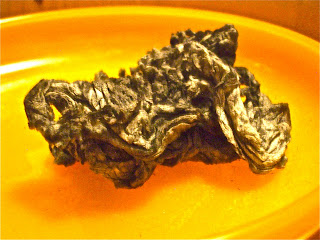The below numbers are the relationship between the state meet and state qualifying meet courses, expressed as a median. They are based on comparisons of state meet time to the state meet qualifier time of every finisher from each section from 2005 - 2010. The information in bold is the ratio for each course resulting from the 2011 state meet.
Crystal Springs (C.C.S., used 2005, 2007, 2009) historically ran 2.9% faster than the state meet. In 2011 it ran true to form at 2.83% faster.
Woodward Park (C.S.) historically ran 0.9% slower than the state meet. In 2011 it ran true to form at 0.88% slower.
Pierce College (l.A.C.S.) historically ran 4.2% faster than the state meet. In 2011 it ran much slower at only 2.83% faster.
Hayward (N.C.S.) historically ran 2.6% faster than the state meet. In 2011 it ran much faster at 3.51% faster.
West Valley (N.S.) historically ran 0.3% faster than the state meet. In 2011 it ran relatively faster at 0.79% faster.
Joaquin Miller Park (O.C.S.) historically ran 12.0% slower than the state meet. In 2011 it ran relatively faster at 11.39% slower.
Morley Field (S.D.S., boys) historically ran 3.4% slower than the state meet. In 2011 it ran much faster at only 1.98% slower.
Morley Field (S.D.S., girls) historically ran 11.2% faster than the state meet. In 2011 it ran much faster at 13.03% faster.
Golden Gate Park (S.F.C.S.) historically ran 3.1% slower than the state meet. In 2011 it ran much slower at 4.32% slower.
Willow Hills (S.J.S.) historically ran 3.9% slower than the state meet. In 2011 it ran much faster at only 1.25% slower.
Mount San Antonio College (S.S., n.i. 2010 due to rain course) historically ran 1.5% faster than the state meet. In 2011 it ran much faster at 2.24% faster.
2 state qualifier courses ran much slower (l.A.C.S., S.F.C.S.)
2 state qualifier courses ran true to form (C.C.S., C.S.)
2 state qualifier courses ran relatively faster (N.S., O.C.S.)
4 state qualifier courses ran much faster (N.C.S., S.D.S., S.J.S., S.S.)
The state meet results were not nearly as fast as historical norms suggested they would be. The most obvious explanation for this is the relative warmth as the day progressed. Below shows the race-time temperature for each race (according to wunderground.com; temperatures are for Fresno) and the factor by which each race was off of historical norms. The d. 4 girls and d. 5 girls results seem to bear this out. Even in the ideal conditions for d. 4 boys, d. 5 boys d. 1 girls, and d. 2 boys, though, performances were off by between 0:09/runner & 0:15/runner. It is also important to note that, according to runworks.com, temperatures at or below 16° are not considered a hindrance to performance in the 5km. A race at 17° would be slower by 0.3%.
d. 4 g.: 0:02 faster/runner, race temperature: 07°
d. 5 g.: 0:03 faster/runner, race temperature: 07°
d. 4 b.: 0:12 slower/runner, race temperature: 08°
d. 5 b.: 0:11 slower/runner, race temperature: 09°
d. 1 g.: 0:09 slower/runner, race temperature: 10°
d. 2 b.: 0:15 slower/runner, race temperature: 12°
d. 3 g.: 0:09 slower/runner, race temperature: 14°
d. 1 b.: 0:15 slower/runner, race temperature: 15°
d. 2 g.: 0:26 slower/runner, race temperature: 16°
d. 3 b.: 0:16 slower/runner, race temperature: 17°


























